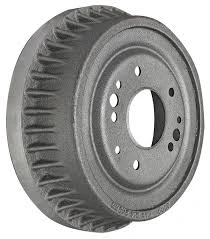
-
 Afrikaans
Afrikaans -
 Albanian
Albanian -
 Amharic
Amharic -
 Arabic
Arabic -
 Armenian
Armenian -
 Azerbaijani
Azerbaijani -
 Basque
Basque -
 Belarusian
Belarusian -
 Bengali
Bengali -
 Bosnian
Bosnian -
 Bulgarian
Bulgarian -
 Catalan
Catalan -
 Cebuano
Cebuano -
 Corsican
Corsican -
 Croatian
Croatian -
 Czech
Czech -
 Danish
Danish -
 Dutch
Dutch -
 English
English -
 Esperanto
Esperanto -
 Estonian
Estonian -
 Finnish
Finnish -
 French
French -
 Frisian
Frisian -
 Galician
Galician -
 Georgian
Georgian -
 German
German -
 Greek
Greek -
 Gujarati
Gujarati -
 Haitian Creole
Haitian Creole -
 hausa
hausa -
 hawaiian
hawaiian -
 Hebrew
Hebrew -
 Hindi
Hindi -
 Miao
Miao -
 Hungarian
Hungarian -
 Icelandic
Icelandic -
 igbo
igbo -
 Indonesian
Indonesian -
 irish
irish -
 Italian
Italian -
 Japanese
Japanese -
 Javanese
Javanese -
 Kannada
Kannada -
 kazakh
kazakh -
 Khmer
Khmer -
 Rwandese
Rwandese -
 Korean
Korean -
 Kurdish
Kurdish -
 Kyrgyz
Kyrgyz -
 Lao
Lao -
 Latin
Latin -
 Latvian
Latvian -
 Lithuanian
Lithuanian -
 Luxembourgish
Luxembourgish -
 Macedonian
Macedonian -
 Malgashi
Malgashi -
 Malay
Malay -
 Malayalam
Malayalam -
 Maltese
Maltese -
 Maori
Maori -
 Marathi
Marathi -
 Mongolian
Mongolian -
 Myanmar
Myanmar -
 Nepali
Nepali -
 Norwegian
Norwegian -
 Norwegian
Norwegian -
 Occitan
Occitan -
 Pashto
Pashto -
 Persian
Persian -
 Polish
Polish -
 Portuguese
Portuguese -
 Punjabi
Punjabi -
 Romanian
Romanian -
 Russian
Russian -
 Samoan
Samoan -
 Scottish Gaelic
Scottish Gaelic -
 Serbian
Serbian -
 Sesotho
Sesotho -
 Shona
Shona -
 Sindhi
Sindhi -
 Sinhala
Sinhala -
 Slovak
Slovak -
 Slovenian
Slovenian -
 Somali
Somali -
 Spanish
Spanish -
 Sundanese
Sundanese -
 Swahili
Swahili -
 Swedish
Swedish -
 Tagalog
Tagalog -
 Tajik
Tajik -
 Tamil
Tamil -
 Tatar
Tatar -
 Telugu
Telugu -
 Thai
Thai -
 Turkish
Turkish -
 Turkmen
Turkmen -
 Ukrainian
Ukrainian -
 Urdu
Urdu -
 Uighur
Uighur -
 Uzbek
Uzbek -
 Vietnamese
Vietnamese -
 Welsh
Welsh -
 Bantu
Bantu -
 Yiddish
Yiddish -
 Yoruba
Yoruba -
 Zulu
Zulu
how do drum brakes work
How Do Drum Brakes Work?
Drum brakes are one of the two primary types of braking systems used in automobiles, the other being disc brakes. They are especially common in older vehicles and on the rear wheels of many modern cars due to their reliability and cost-effectiveness. Understanding how drum brakes work can give insight into their function and maintenance.
At the core of drum brakes is a cylindrical drum that rotates with the wheel. Inside this drum, there are brake shoes that are curved and pressed against the inside surface of the drum when the brakes are applied. The brake shoes are connected to a hydraulic system, which converts the driver's pedal pressure into force.
How Do Drum Brakes Work?
One of the main advantages of drum brakes is their ability to provide strong stopping power. The design allows for a larger surface area for friction to occur compared to disc brakes, particularly in older vehicle models. This makes them effective for heavier loads, necessitating a higher braking force.
how do drum brakes work

Drum brakes also have the added benefit of being self-adjusting. As the brake shoes wear down over time, a mechanism within the brake assembly automatically adjusts the position of the shoes to maintain effective contact with the drum. This feature can reduce maintenance requirements, as drivers may not need to adjust the brakes as frequently.
However, drum brakes do have their drawbacks. They can be prone to overheating, especially in situations requiring constant braking, such as during downhill driving. This can lead to brake fade, where the effectiveness of the brakes diminishes due to excessive heat. Additionally, drum brakes can be more complex to service and replace compared to disc brakes, which can complicate maintenance processes.
In recent years, while disc brakes have become more prevalent, particularly in front-wheel applications, drum brakes continue to be used effectively in certain contexts. They remain a reliable option for rear brakes and are often found in heavier vehicles like trucks and buses that require robust braking systems.
In summary, drum brakes operate through a system of hydraulic pressure that forces brake shoes against a spinning drum, generating the necessary friction to slow down or stop a vehicle. Their efficiency and self-adjusting design make them a popular choice for specific applications, even as technology continues to evolve in vehicle braking systems.
-
What Are Drum BrakesNewsJul.07,2025
-
Understanding Brake Drum MaterialNewsJul.07,2025
-
Semi-Trailer Brake Drum: A Key Component for Extreme Loads and Long-Distance TransportNewsJul.07,2025
-
Drum Brake Pads for SaleNewsJul.07,2025
-
Brake Drums for SaleNewsJul.07,2025
-
Brake Drum ManufacturerNewsJul.07,2025
-
Aluminum Brake Drums: The Future of High-Performance CarsNewsJul.07,2025
